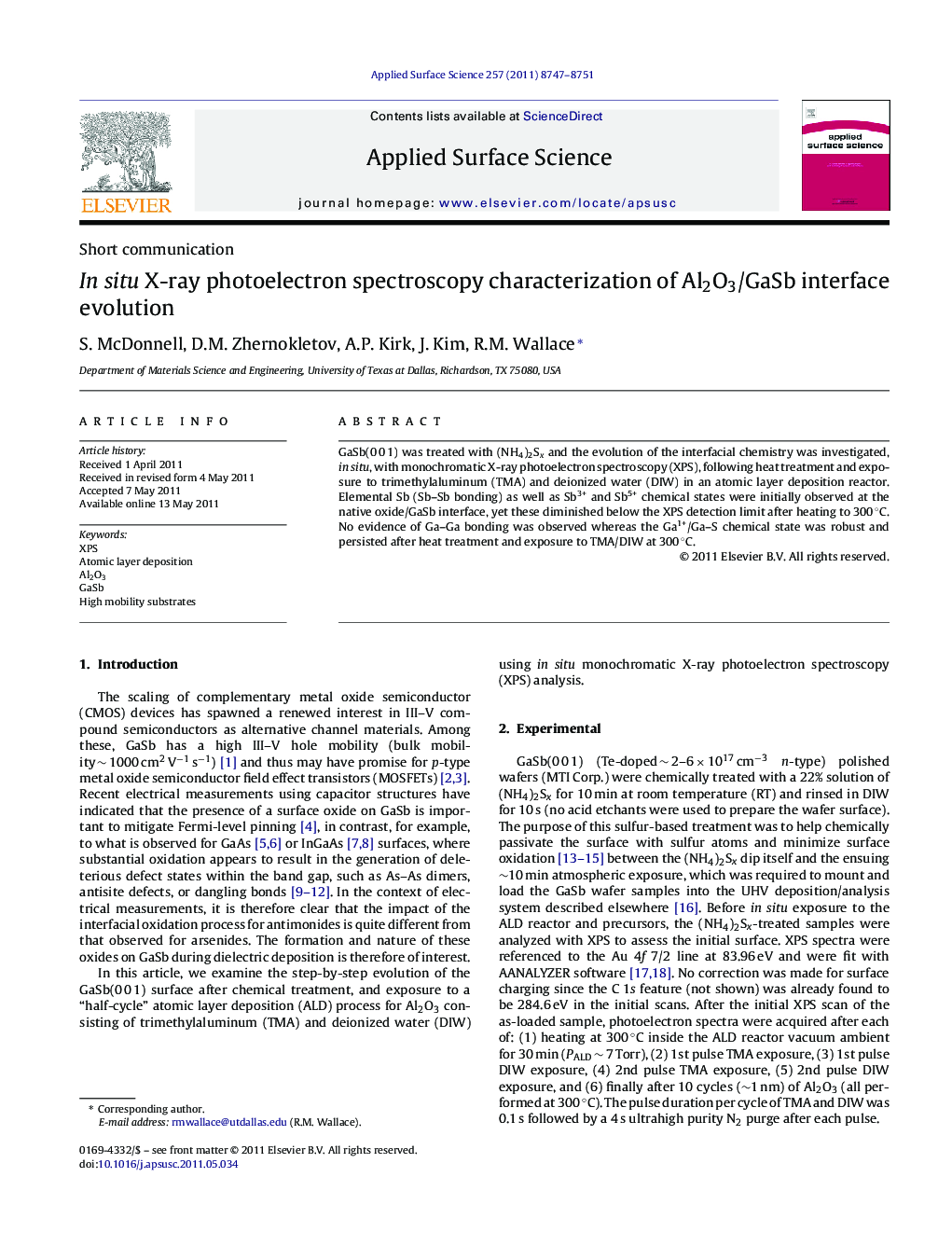| Article ID | Journal | Published Year | Pages | File Type |
|---|---|---|---|---|
| 5363691 | Applied Surface Science | 2011 | 5 Pages |
GaSb(0 0 1) was treated with (NH4)2Sx and the evolution of the interfacial chemistry was investigated, in situ, with monochromatic X-ray photoelectron spectroscopy (XPS), following heat treatment and exposure to trimethylaluminum (TMA) and deionized water (DIW) in an atomic layer deposition reactor. Elemental Sb (Sb-Sb bonding) as well as Sb3+ and Sb5+ chemical states were initially observed at the native oxide/GaSb interface, yet these diminished below the XPS detection limit after heating to 300 °C. No evidence of Ga-Ga bonding was observed whereas the Ga1+/Ga-S chemical state was robust and persisted after heat treatment and exposure to TMA/DIW at 300 °C.
⺠300°C annealing causes the O and S bonded to Sb to transfer to Ga ⺠300°C annealing causes leaves the top 5-6 nm of the substrate Sb rich ⺠TMA reduces the sulfur detected ⺠Sb-Sb, Sb-O and Sb-S bonds are not detected after annealing or ALD ⺠Ga-O and Ga-S remain detectable after annealing and ALD
